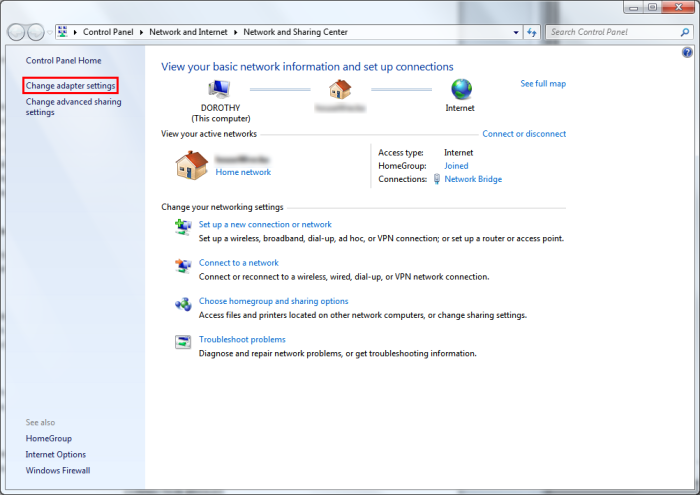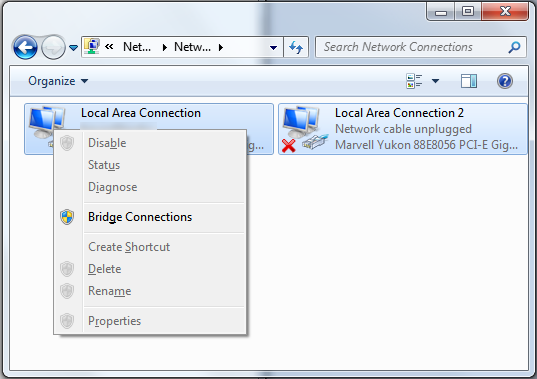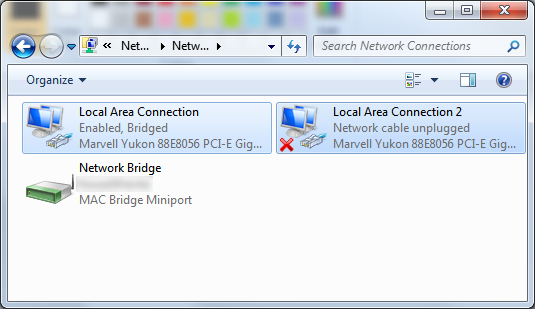Posts Tagged ‘ps3’
Bridge Connection Between PC and PlayStation 3
If you’re like me, a gamer, you prefer a guided network connection for your PS3 (everything else is inferior) and PC. However, not everyone’s console is conveniently located next to a router or modem. In my case the router is upstairs and a 50 foot Ethernet cable running to the main computer. I could buy a switch and use it for what it was made, but that would cost money. I could also buy another 50 foot cable, but that would mean I’d have to buy one, drill another hole and crawl through areas of my house I didn’t know exist. Luckily my PC is very close to my PS3 meaning I can share my connection. Your PC doesn’t have to be close to your PS3, but in this case I am assuming your PC is closer to your PS3 than your router, else you wouldn’t have ended here.
Windows Settings:
Make sure your computer has two Ethernet ports. Your motherboard may have two, if not you can buy a cheap Ethernet card online or in a store.
After making sure all the hardware is present you need to make the connection on your PC a bridge connection. Open Network and Sharing Center, on the left click Change adapter settings. There you should see both adapters.
Select both adapters by highlighting them. Once both are selected right click and choose Bridge Connection.
Once you’ve selected Bridge Connection Windows will do its thing and set up everything. It takes a few seconds Windows to up the bridge and for your computer to re-establish a connection.
Now hook up your PS3 to your PC and Windows will do its thing again. However, you have to change some settings on the PS3.
PlayStation 3 Settings:
*Sorry that I don’t have any PS3 screens at the moment. I may add some later on.
Once your PS3 is ON go to Network Settings, there choose Internet Connection Settings. Choose Custom >Wired Connection > Manual Settings. For Speed and Duplex leave it on Automatic unless you know the speed, the same goes for IP Address. Under DHCP host name choose Do Not Set. Leave DNS and MTU Automatic. For Proxy Server choose Do Not Use. Enable UPnP. Test you’re set up and it should come out just dandy.
*Note: This works between PCs as well. All you do is connect the two PCs together and let the OS (assuming it’s Windows) take care of the rest. If it doesn’t work and you’re running 7 or Vista use the automated problem detection to fix the problem.
Enjoy your bitchin’ speed.
Written by Samir Banjanovic
September 18, 2009 at 12:19 am
Posted in How To
Tagged with bridge, connection, ethernet, guided network, playstation 3, ps3, ps3 connection, ps3 network, share, share connection, Windows



